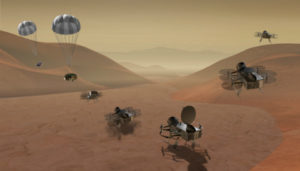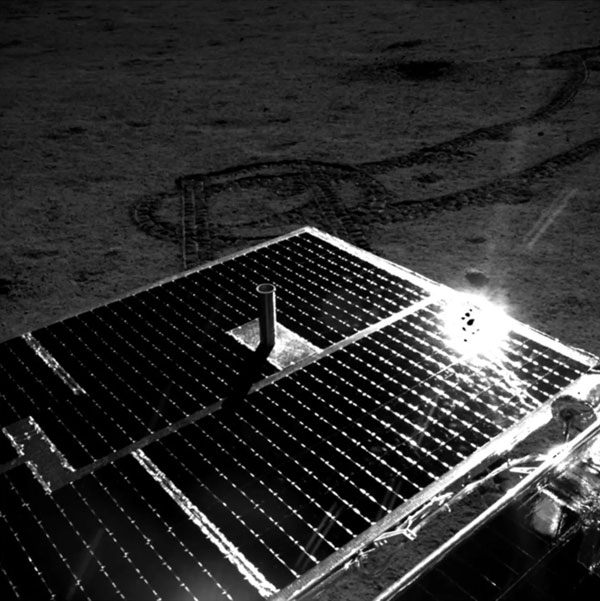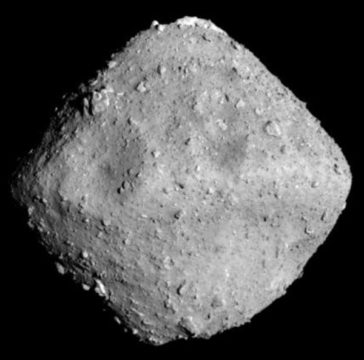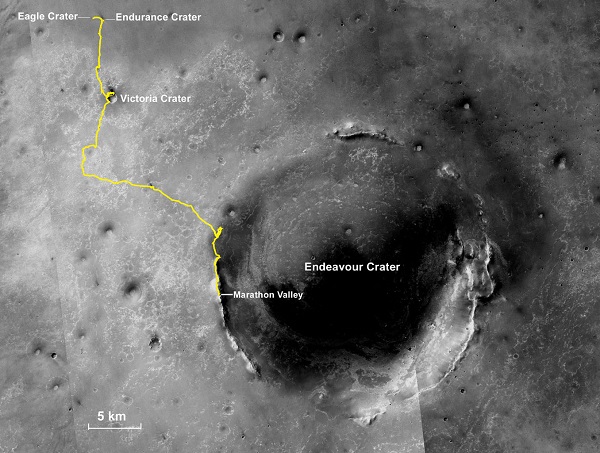Top 10 Astronomy News Stories of 2019 – SkyandTelescope.com
Our pick for the biggest astronomy news story of the year is the first-ever image of a black hole “shadow.” What’s yours?
The seeds for this year’s milestones in astronomy news were planted long ago. More than a decade of planning preceded astronomers’ first-ever image of a black hole. Almost 30 years of engineering went into the New Horizons mission. And the newest interstellar visitor probably traveled at least a million years before we discovered it in the solar system.
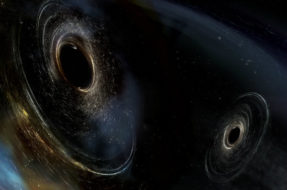
Two black holes prepare to merge in this artist’s illustration.
LIGO / Caltech / MIT / Aurore Simonnet(Sonoma State)
Likewise, work is underway this year for future discoveries. The LIGO and Virgo gravitational-wave detectors have been online since April 2019, and candidate gravitational-wave events have been pouring in by the dozens. Expect to see a list of confirmed mergers detected during the first half of the observing run around April 2020.
Astronomers are also in the beginning stages of planning their next big mission to follow the James Webb Space Telescope, which is due to launch in 2021. Four mission concepts are battling for the prize, each of them targeting a different part of the electromagnetic spectrum. The final decision is now expected in early 2021.
NASA has also announced two exciting new missions that will bear fruit with more patience: The VIPER rover is set to land on the Moon by late 2022, and the Dragonfly mission will send a rover-size drone to explore Saturn’s enshrouded moon Titan in 2034.
In the meantime, as 2019 draws to a close, we look back on some of this year’s biggest astronomy news.
1. Image of a Black Hole’s “Shadow”
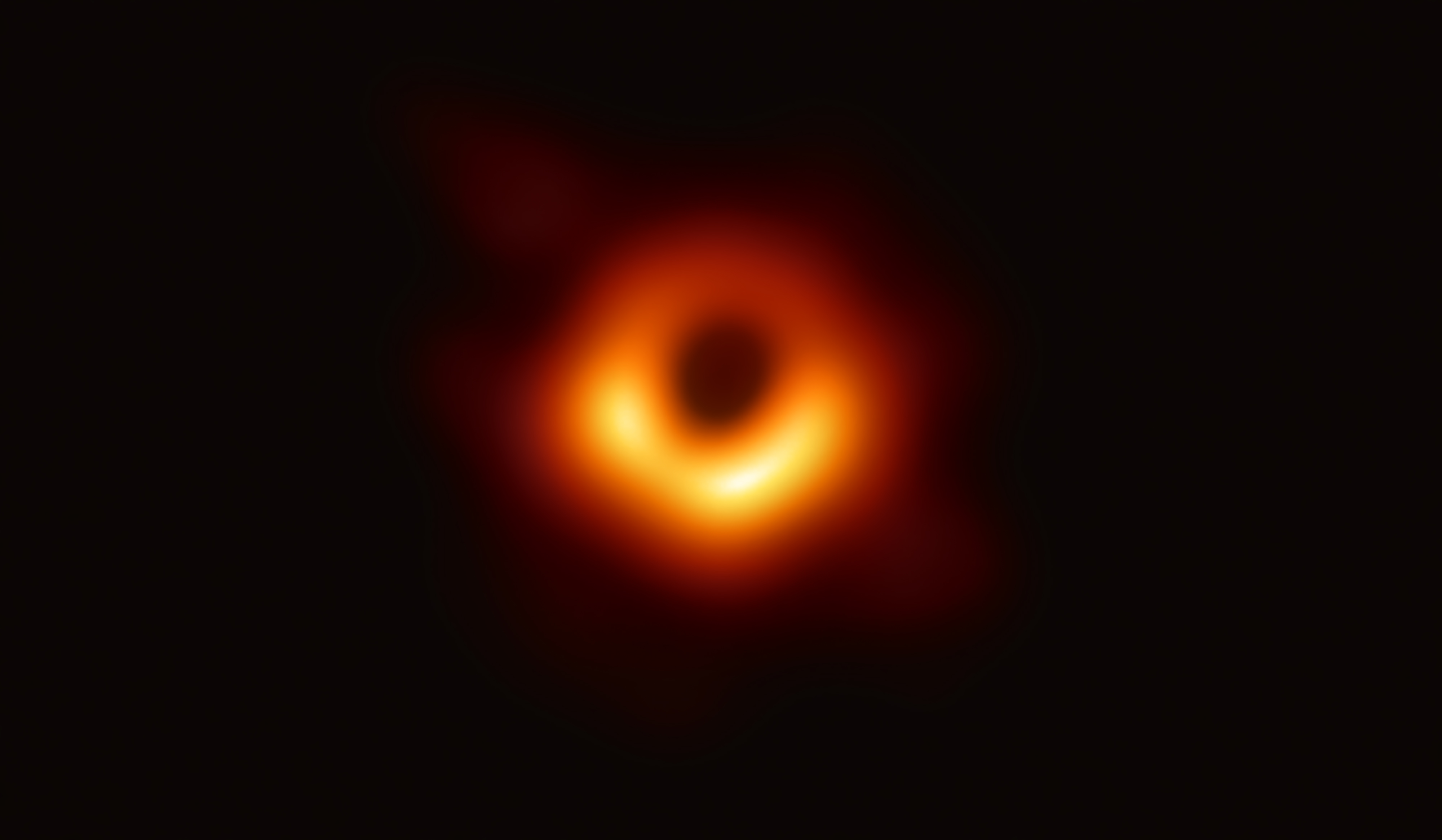
Scientists used computer codes and months of analysis to construct this image of the supermassive black hole in the center of the galaxy M87. The dark center marks where light plunges past the event horizon, never to return; the crescent is from the light and hot gas just outside.
Event Horizon Telescope collaboration
Last April, astronomers unveiled the first image of a black hole’s silhouette, a pitch-black hole as seen against the hot, radio-emitting gas it’s accreting. The silhouette is only 40 microarcseconds across — roughly the size of a thumbnail seen from 40,000 miles away. To accomplish this feat took years of planning and coordination between radio telescopes spread across the globe.
2. New Horizon Flies By Arrokoth
On New Year’s Day, NASA’s New Horizons flew by the most distant object we’ve ever visited in the solar system, the Kuiper Belt object designated (486958) 2014 MU69 and now known officially as Arrokoth.
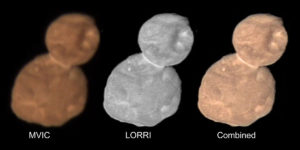
New Horizons scientists created the composite color image at right by combining the visible-light and near-infrared map of 2014 MU69 seen at left with a higher-resolution image from the spacecraft’s LORRI camera at center, This composite emphasizes teh overall red color of both lobes, as well as the relatively bright (and less-red) ring of material around the object’s “neck”.
NASA / JHU-APL / SwRI
The views were stunning and unexpected, showing a dark, reddish snowman that turned out not to be snowman-shaped at all. The data that New Horizons is still in the process of downlinking to Earth are shedding light on how planets formed in the early solar system.
3. Moon Landings, Soft and . . . Not So Soft
Three nations attempted to land on our nearest celestial neighbor this year — and many more are to come! China made the first — and only successful — landing of the year when its Chang’e 4 lander and rover touched down in January. Both lander and rover are both still exploring the Von Kármán Crater on the farside of the Moon.
Two other landing attempts ended less happily. Israel’s Beresheet mission, the first privately funded mission to the Moon, experienced a problem with its main descent engine before impacting the edge of Mare Serenitatis on April 11th. And India’s Chandrayaan 2 lander and rover, named Vikram and Pragyan, experienced a software glitch before crashing not far from their intended landing target near the lunar south pole. The Chandrayaan 2 orbiter is still operational, though, and continues to map the lunar surface.
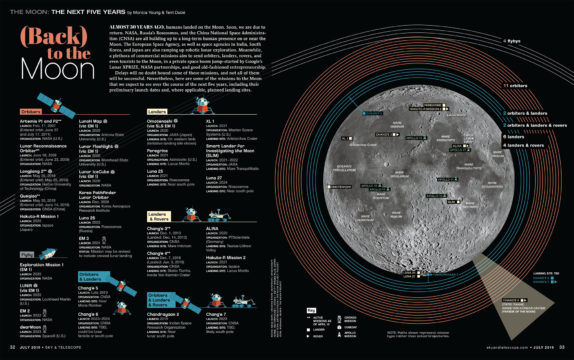
Click for a higher-resolution version of this infographic, which shows planned missions to the Moon as of April 2019.
4. The Second Interstellar Visitor
When astronomers discovered ‘Oumuamua last year, we thought it was happenchance that we’d discovered a visitor coming from outside the solar system. Lo and behold, we have discovery #2 only one year later!
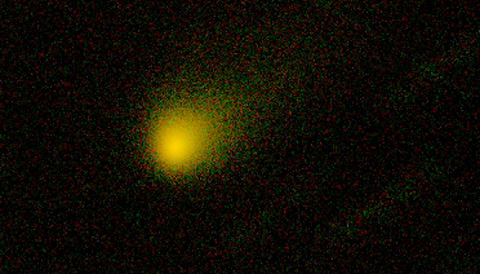
This two color composite image of Comet 2I/Borisov was captured by the Gemini North telescope on September 10, 2019.
Gemini Observatory / NSF / AURA
While ‘Oumuamua challenged our understanding of the origin of such objects, Comet 2I/Borisov meets our expectations in every way. Borisov’s size and composition match what we’ve seen in long-period solar system comets and it even sports a comet-like fuzz. Observations of Comet Borisov will continue through early 2020.
5. Tour of the Asteroids
Japan’s Hayabusa 2 spacecraft made history when it touched down — twice! — to collect samples from the asteroid 162173 Ryugu. Now, Hayabusa 2 is headed home, due to fly by Earth in December 2020, when it will eject its sample return capsule for collection in the Australian desert.
Meanwhile, NASA’s Osiris-REX mission is still orbiting 101955 Bennu, poring over the unexpectedly rough terrain that challenged its choices for sample site selection. In December, NASA announced that it had selected the Nightingale site for its “touch-and-go” sample-collecting maneuver, expected in mid-2020.
6. Touching the Sun
Just this month came the first results from the Parker Solar Probe mission, which has completed three of 24 planned orbits that take it increasingly close to the Sun. Parker has already skimmed the Sun’s outermost atmosphere, passing within 24 million kilometers (15 million miles) of the visible surface, or just over half of Mercury’s distance at perihelion.

A depiction of ‘switchback’ events on the solar wind.
NASA / Conceptual Image Lab / Adriana Manrique Gutierrez
Among other first findings, scientists announced the discovery of “rogue waves” in the solar wind, which accelerate particles by more than 300,000 mph in a matter of seconds. Reversals in the magnetic field accompany these changes, so-called switchbacks that astronomers think may hold the key to heating the Sun’s outer atmosphere.
7. Starlink vs. the Stars
Perhaps the most controversial development this year have been the multiple launches of Starlink satellites by the aerospace company SpaceX. While the satellites promise global broadband internet (for a price), a lofty enough goal, the brightness of the first batch launched in May set off a controversy that’s still ongoing.
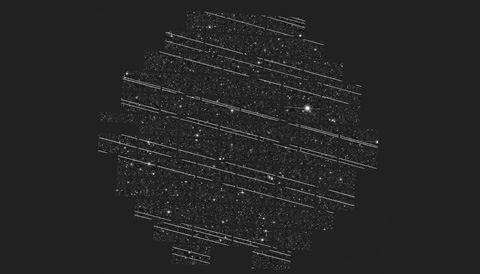
Early morning on Monday, November 18th, Cliff Johnson (Northwestern University) and colleagues took this image using the Dark Energy Camera on the 4-meter Blanco Telescope at the Cerro Tololo Inter-American Observatory. Nineteen Starlink satellite trails crossed the image during the six-minute exposure. The image was taken as part of the DELVE survey, which is mapping the outskirts of the Magellanic Clouds, as well as much of the southern sky in search of new dwarf galaxies orbiting the Clouds or the Milky Way.
DELVE Survey / CTIO / AURA / NSF
The satellite train — which appears when the Starlink satellites are still in low orbits and clumped together on the sky — is a sight to behold. But even when the satellites have ascended, they’re still bright. And with around 12,000 approved for launch by the Federal Communications Commission, they’re also shockingly numerous. This year alone has seen the launch of 120 satellites, with another launch slated for the end of December.
8. Oppie’s Goodbye
A 2018 dust storm covered the solar panels of the Opportunity rover on Mars, but for months NASA engineers worked to recover the rover. To no avail — NASA officially announced the end of the Opportunity mission in February.
Designed to last 90 days, the intrepid mission instead went for almost 15 years, covered some 45.16 kilometers (28.06 miles), and changed our understanding of the Red Planet’s wet and warm past.
9. Nobel Prize Goes to Astronomy
It isn’t every year that astronomers receive the Nobel Prize in Physics — the last time was in 2017 and before that 2011. This year, the prize went to James Peebles and to Michel Mayor and Didier Queloz for disparate discoveries that nevertheless offer new perspectives on our place in the universe: Peebles was honored for his theoretical work in cosmology, while Mayor and Queloz received the award for their observations of a planet around a Sun-like star.
10. Jupiter’s Unfurling Great Red Spot
Perhaps the biggest event to hit backyard telescopes this year was the unfurling of Jupiter’s Great Red Spot (GRS). Bright red, methane-free flakes emerged from the west end, and then the east end of the GRS as the Southern Equatorial Belt appears to be pulling material from the great storm, creating a churning bridge between the two features.
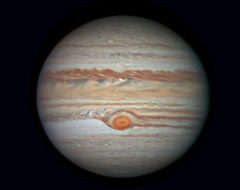
Jupiter captured by Clyde Foster in Centurion, South Africa on May 20th with a 14-inch telescope and ZWO ASI290MM camera.
Such flaking events aren’t unheard of, but they used to happen only rarely; over the past few years, they seem to be occurring frequently. It’s still unclear how these events are related to the diminishing size of the Great Red Spot, if at all.
Honorable mention: Gaia’s New View
In 2018, the European Space Agency’s Gaia mission released its newest catalog, charting distances to more than a billion Milky Way stars. Now, that data is paying off in droves. Astronomers how have a new, more precise estimate of the Milky Way’s mass: equivalent to 1.5 trillion Suns. They also have a new timeline for our meet-up with our sister galaxy Andromeda, delayed from 3.9 billion years from now to 4.5 billion years. (Also, it turns out it’ll be more of a glancing blow than a head-on collision.)
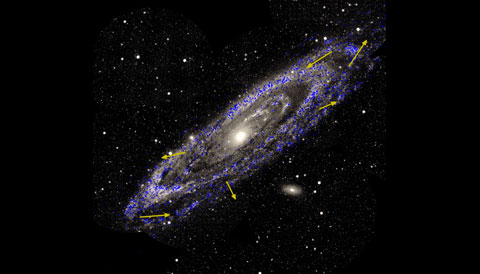
On this view of the Andromeda Galaxy from NASA’s GALEX satellite, yellow arrows indicate the average stellar motions at various locations based on data from Gaia’s second data release.
Star motions: ESA / Gaia; Background image: NASA / Galex; R. van der Marel / M. Fardal / J. Sahlmann (STScI)
Multiple studies are also using Gaia to peek into our galaxy’s past, and even probe its dark matter surroundings. Individually, these studies may seem small, but together they’re transforming our understanding of the galaxy we call home.

